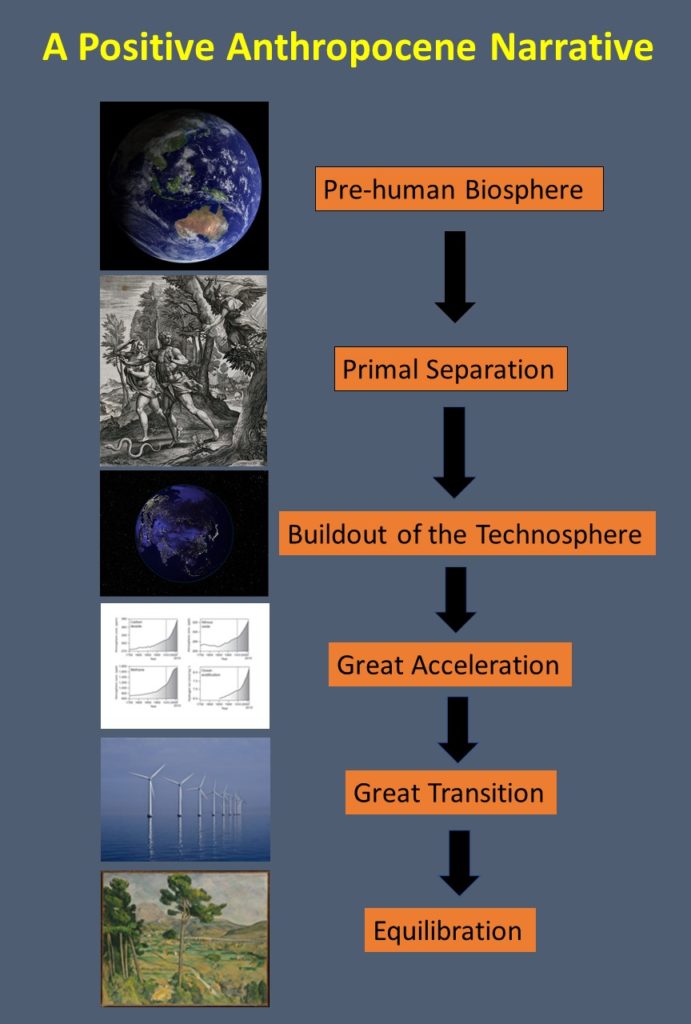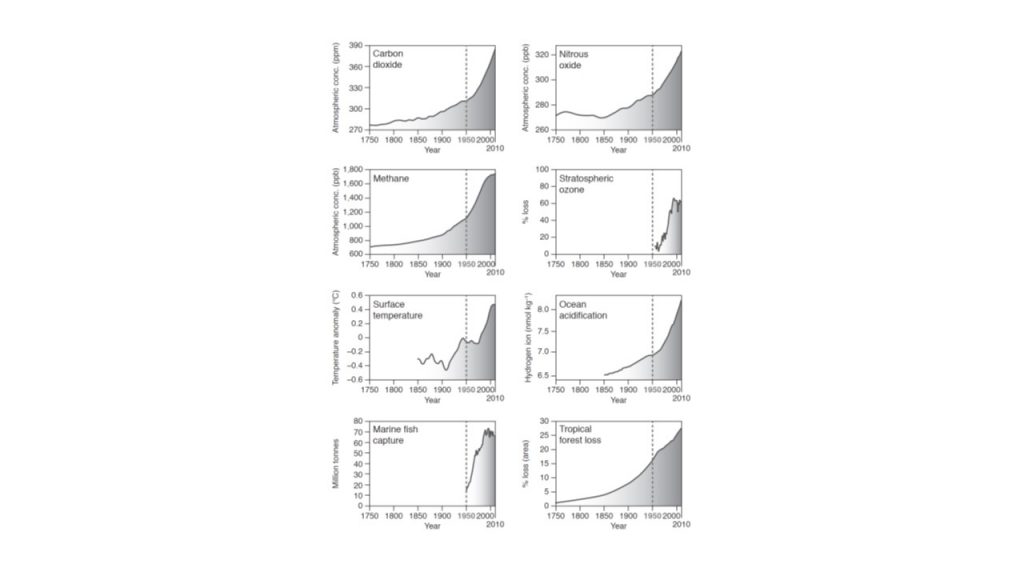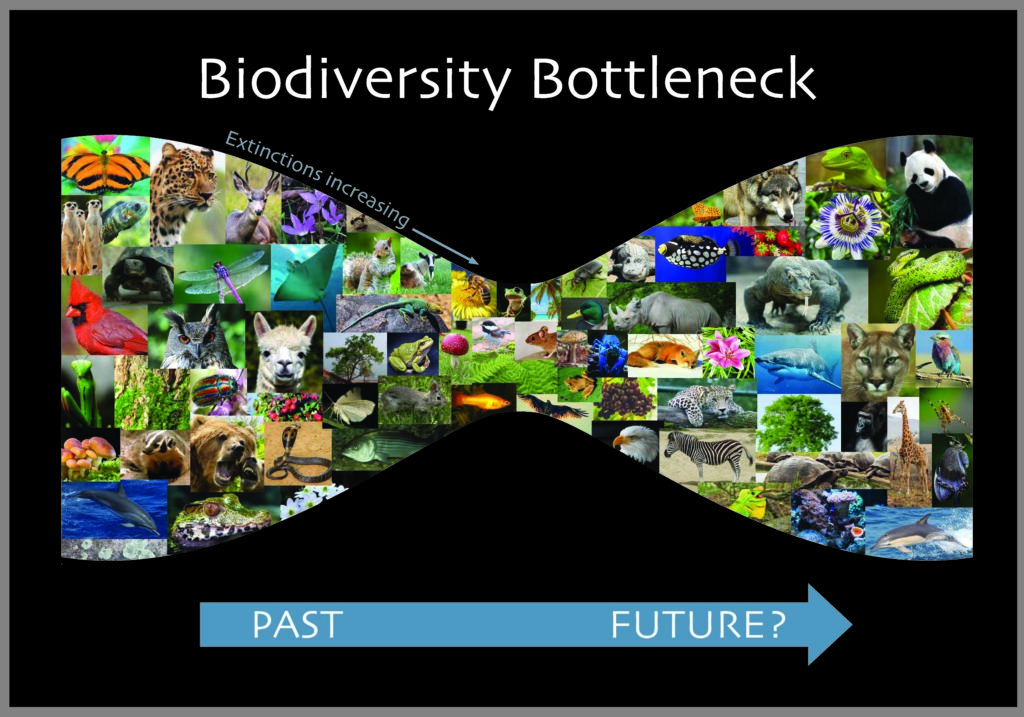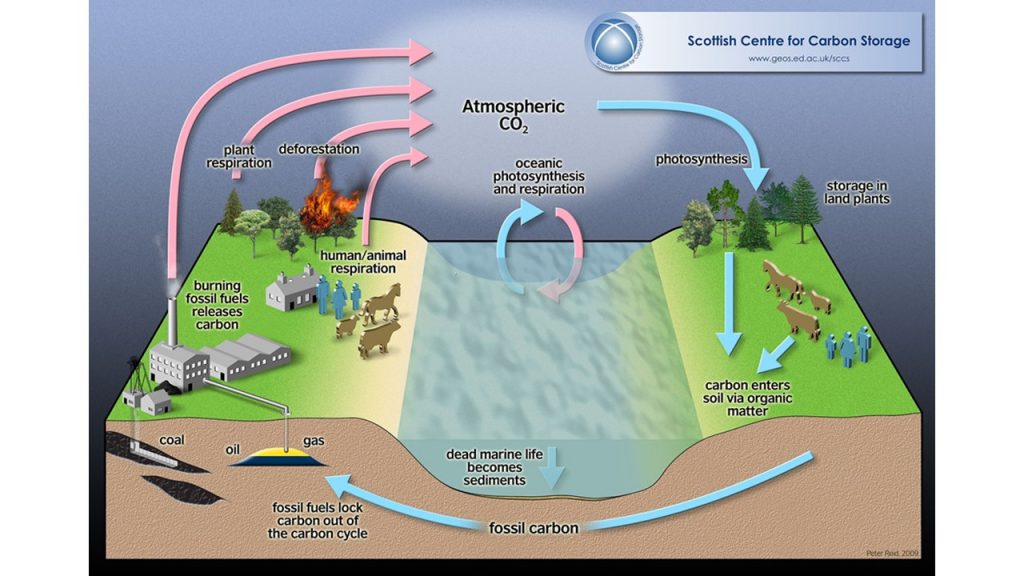David P. Turner / February 16, 2020
The peer-reviewed literature and the popular media
today abound with concern about human-induced global environmental change. Articles often argue that global scale
problems require global scale solutions: humanity is causing the problem and
“we” must rapidly implement solutions. Environmental
psychologists have found that people who sympathize with or identify with a
group are energized to support its cause.
Can a majority of human beings identify with humanity in a way that
motivates collective change towards global sustainability?
Let’s consider several key constraining factors and
unifying factors relevant to making humanity a “we” with respect to global
environmental change.
Constraining Factors
Notable sociopolitical factors that impede global
solidarity include the following.
1. Climate
Injustice among Nations
In the process of their development, the most
developed countries burned through a vast amount of fossil fuel and harvested a
large proportion of their primary forests, hence causing most of the observed rise
in atmospheric CO2 concentration.
But these countries are now asking the developing countries to share
equally in the effort to curtail global fossil fuel emissions and deforestation
to prevent further climate change. At
the same time, the impacts of climate change will tend to fall most heavily on
the developing countries because of their lower capacity for adaptation. The developing countries are pushing back on
the basis
of fairness, e.g. the outcome of the Kyoto
protocol (albeit now obsolete) was that only the developed countries
made commitments to reduce greenhouse gas emissions.
2. Rising Nationalism
Economists generally agree that economic globalization
has spurred the global economy and helped lift hundreds of millions of people
out of extreme poverty. However,
globalization of the labor market beginning around 1990 has also meant a large
transfer of manufacturing from the developed to the developing world – and with
it many jobs.
Likewise, immigration is helping millions of people a
year find a better life by leaving behind political corruption, resource
scarcity, and environmental disasters.
Unfortunately, one effect of economic globalization
and mass immigration has been political backlash within developed countries in
the form of populism and nationalism. Hypersensitivity
to loss of national sovereignty is not conducive to international agreements to
address global environmental change issues.
3. Climate
Science Skeptics
Although the global scientific community is broadly in
consensus about the human causes of climate warming and other global
environmental change problems, the rest of the world is more divided. Most people in the U.S. accept that the
global climate is changing, but only
about half accept the scientific consensus that climate warming is caused by
human actions. Sources
of skepticism about climate science include religious beliefs and vested
interests.
4. Economic
Inequality
Wealth
inequality, both within nations and
among them, is a pervasive feature of the global
economy. The rich end of the wealth
distribution contributes to the vested interests problem as just noted. At the poor end of the wealth distribution,
the hierarchy of needs discourages concern for the environment; solidarity with
the fight against climate change is a luxury when you are starving.
These four constraining factors are deeply rooted and
are only the head of a list that would also include competition for limited
natural resources and geopolitical conflict.
It is daunting to think about overcoming these obstacles to a “we” that
includes all of humanity. There are
substantive ongoing research and applied efforts (not documented here) to
overcome them, but in a general way let’s consider some equally significant factors
that may help foster a global “we”.
Unifying Factors
The following rather disparate set of factors supply
some hope for human unification under the banner of environmental concern.
1. Our Genetic Heritage
Humans are social creatures. Sociobiologists, such as Harvard Professor
E.O. Wilson, have argued that many of our social impulses are genetically
based. We have an instinctual propensity
to identify with a particular social group, and to draw a distinction between
that group (us) and outsiders (them).
The average ingroup size during the hunter/gatherer phase of human
evolution, which largely shaped our social instincts, is believed to have been
about 30 people. Remarkably, the size of
the social group that humans identify with has vastly expanded over historical
time − from the level of tribe, to the level of village, empire, and the modern
nation-state. Conceivably, that capacity
could be extended to the global scale: we
might all eventually consider ourselves citizens of a planetary civilization.
The historical expansion of social group size was
driven in part by military
considerations −
the need to have a larger army than your neighbor. Obviously, this rationale breaks down at the
global scale, but a distinct possibility for inspiring global solidarity is the
looming threat of global environmental change.
Note that being a citizen of the world does not
require rejecting one’s local or national culture. Multiple
sources of identity could include being an autonomous
individual, being a member of various ingroups, and being a member of humanity
in its entirety.
2. The Advance
of Earth System Science
A conspicuous general trend favorable to achieving a
collective sense of responsibility for managing human impacts on the Earth
system is growth in our scientific understanding of the Earth system. From studies of the geologic record, scientists
know that Earth’s climate has varied widely, from cool “snowball” Earth phases
to relatively warm “hothouse” Earth phases.
Greenhouse gas concentrations have consistently been an important driver
of global climate change, which gives scientists confidence that as greenhouse
gas concentrations rise, Earth’s climate will warm.
The scientific community also has expansive monitoring
networks that reveal the exponentially
rising curves for metrics such as the atmospheric CO2
concentration. Earth system models that
simulate Earth’s future show the dangers of Business-as-Usual scenarios of
resource use, as well as the benefits of specific mitigation measures. At the request of the United Nations, the global scientific community
periodically assembles the most recent research about climate change, the
prospects for mitigation (i.e. reduction of greenhouse gas concentrations), and
the possibilities for adaptation.
If improved understanding of the human environmental
predicament can filter down to the global billions, we might hope for a
strengthening support for collective action.
3. The Evolution
of the Technosphere
The technosphere
is a new global-scale part of the Earth system.
It joins the pre-existing geosphere, atmosphere, hydrosphere, and
biosphere. However, just as the
evolution of the biosphere was a major disturbance to the early Earth system,
the evolution of the technosphere is proving to be disruptive to the
contemporary Earth system.
Around 2.3 billion years ago, cyanobacteria evolved
that could split water molecules (H2O) in the process of
photosynthesis. The resulting oxygen (O2)
began to accumulate in the atmosphere, radically changing atmospheric
chemistry. Oxygen was toxic to many
existing life forms, but eventually micro-organisms capable of using oxygen in
the process of respiration evolved, which in time led to the evolution of multicellular
organisms (and eventually to us).
In the case of technosphere evolution, a process that
emits excessive amounts of CO2 (combustion of fossil fuels) has
arisen, which is altering the global climate and ocean chemistry in a way than
may be toxic to many existing life forms.
One potential solution is that the technosphere can further evolve (by
way of cultural evolution) to subsist on renewable energy rather than
combustion of fossil fuels, thus moderating its influence on the atmosphere,
hydrosphere, and biosphere.
A characteristic feature of technosphere
evolution is ever more elaborate means of transportation and
telecommunications. These capabilities –
especially the on-going buildout of the Internet – allow for increased
integration across the technosphere and tighter coupling of the technosphere
with the rest of the Earth system. Sharing
results of environmental monitoring in its many dimensions over
the telecommunications network can help with creating and maintaining
sustainable natural resource management schemes.
Through the popular news and social media, nearly
everyone in the world can learn about events such as regional droughts and
catastrophic forest fires that are associated with climate change. It is thus becoming easier to have a common frame
of reference among all humans about the state of the planet.
There is not yet anything like a global consciousness
that coordinates across the whole technosphere.
However, the Internet is facilitating the emergence of a global
brain type entity. One
indication of what the nascent global brain is thinking about is the relative frequencies
of different search terms on Google.
Interestingly, in the algorithms that determine the response to search
engine queries, a high frequency of previous usage for a relevant web site
makes that site more likely to reach the top of the response list. That process is evocative of learning, i.e.
reinforcement through repetition. Similarly,
the Amygdala
Project monitors Twitter hashtags. They are classified according to emotional
tone, and a running visual summation gives a sense of the collective emotional
state (of the Twitterers). Advances in artificial
intelligence and quantum computing may soon improve the
module in the global brain that simulates the future of the Earth system.
4. The
Expanding Domain of Human Moral Concern
In “The Slow Creation of Humanity”, psychologist Sam McFarland recounts the history of the human rights movement. Writer H.G. Wells, humanitarian Eleanor Roosevelt, and others have helped develop the rationale and legal basis for including all human beings in our “circles of compassion” (Einstein’s term). The concept of rights has now begun to be legally extended to Nature (in Ecuador) and specifically to Earth (in Bolivia). Since protecting the rights of Earth (e.g. to be free of pollution) clearly requires that humans work collectively, we come to an incentive for global human solidarity.
Again, these four unifying factors are only the start
of a list that might also include global improvements in education, as well as
growth in the activities of global non-governmental environmental
organizations.
Conclusions
The field of Earth
system science is producing an increasingly clear
understanding of the human predicament with respect to global environmental
change. Scientist know what is happening
to the global environment, what is likely to happen in the future under
Business-as-Usual assumptions, and to some degree, what must change to avert an
environmental catastrophe.
The process of changing the trajectory of the Earth
system cannot be done unilaterally. From the top down, an important step will be
genesis or reform of the institutions of global governance – including institutions
concerned with the political,
economic,
and environmental dimensions
of governance. This is a task for a
generation of researchers, political leaders, and diplomats. From the bottom up, individuals must be
brought around as adults, and brought up as children, to adopt an identity that
includes global citizenship and associated responsibilities for the global
environment. This is a task for a
generation of educators, religious leaders, and business leaders.
If “we” human dwellers on Earth don’t gain a collective identity and begin to better manage the course of technosphere evolution, then we may no longer thrive on this planet.
Recommended Audio/Video, Mother Earth, Neil Young

















